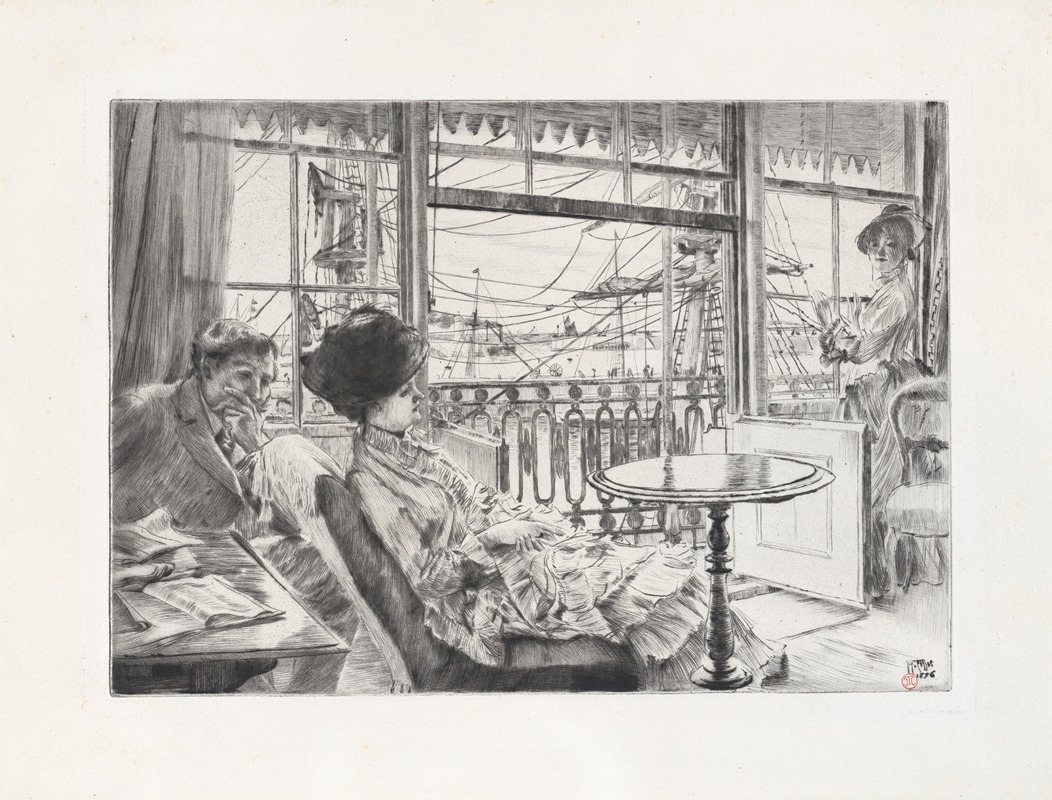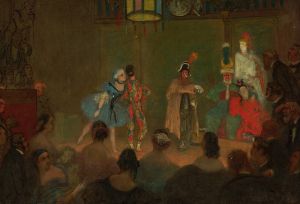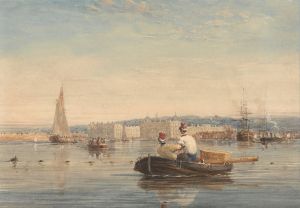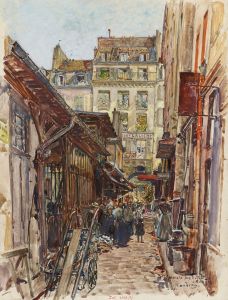
Ramsgate
A hand-painted replica of James Tissot’s masterpiece Ramsgate, meticulously crafted by professional artists to capture the true essence of the original. Each piece is created with museum-quality canvas and rare mineral pigments, carefully painted by experienced artists with delicate brushstrokes and rich, layered colors to perfectly recreate the texture of the original artwork. Unlike machine-printed reproductions, this hand-painted version brings the painting to life, infused with the artist’s emotions and skill in every stroke. Whether for personal collection or home decoration, it instantly elevates the artistic atmosphere of any space.
James Tissot's painting "Ramsgate" is a notable work by the French artist, who is renowned for his detailed and vibrant depictions of contemporary life in the late 19th century. Tissot, born Jacques Joseph Tissot in 1836 in Nantes, France, was a painter and illustrator who gained prominence for his genre paintings that often captured the fashion and social customs of his time. He spent a significant portion of his career in England, where he produced many of his most famous works.
"Ramsgate" is one of Tissot's paintings that reflects his keen interest in capturing the nuances of social life and leisure activities. Ramsgate, a seaside town in Kent, England, was a popular holiday destination during the Victorian era, known for its picturesque harbor and sandy beaches. Tissot's choice of Ramsgate as a subject aligns with his broader artistic focus on scenes of leisure and the bourgeois lifestyle.
The painting is characterized by Tissot's meticulous attention to detail and his ability to convey the textures and patterns of clothing, which was a hallmark of his style. His works often feature elegantly dressed figures, and "Ramsgate" is no exception. The painting likely depicts a scene of leisure, with figures engaging in activities typical of a seaside resort, such as promenading or enjoying the coastal scenery. Tissot's use of color and light would have been employed to enhance the vibrancy and liveliness of the scene, capturing the essence of a day spent by the sea.
Tissot's time in England, from 1871 to 1882, was a period of significant artistic output and success. During this time, he became associated with the Aesthetic Movement, which emphasized beauty and art for art's sake. His works from this period often reflect the movement's ideals, focusing on beauty, elegance, and the pleasures of life. "Ramsgate" fits within this context, showcasing Tissot's ability to blend narrative with aesthetic appeal.
The painting also reflects Tissot's interest in the interplay between people and their environments. His compositions often include detailed backgrounds that provide context and depth to the scenes he depicts. In "Ramsgate," the setting would have been an integral part of the composition, contributing to the overall narrative and mood of the painting.
Tissot's work, including "Ramsgate," is celebrated for its technical skill and its ability to capture the spirit of the age. His paintings offer a window into the social dynamics and cultural trends of the late 19th century, making them valuable both as works of art and as historical documents. Today, Tissot's paintings are held in high regard and can be found in major art collections and museums around the world, where they continue to be appreciated for their beauty and historical significance.


















